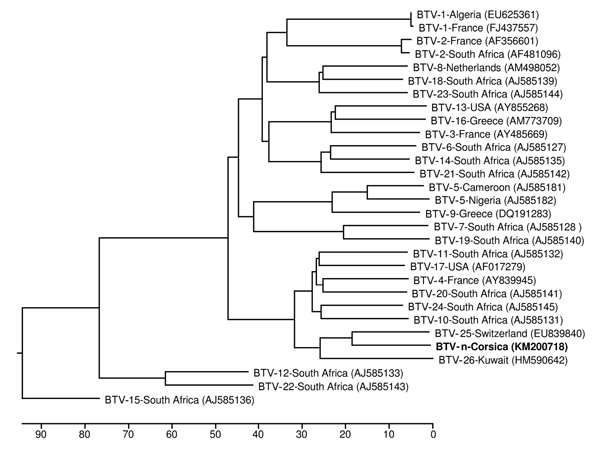Volume 20, Number 12—December 2014
Dispatch
Novel Bluetongue Virus in Goats, Corsica, France, 2014
Figure

Figure. Phylogenetic tree of segment 2, showing relationships between BTV-n (boldface) and other BTV strains available in GenBank (accession nos. are shown in parentheses). Scale bar represents the percentage of nucleotide substitutions. BTV, bluetongue virus.
Page created: November 19, 2014
Page updated: November 19, 2014
Page reviewed: November 19, 2014
The conclusions, findings, and opinions expressed by authors contributing to this journal do not necessarily reflect the official position of the U.S. Department of Health and Human Services, the Public Health Service, the Centers for Disease Control and Prevention, or the authors' affiliated institutions. Use of trade names is for identification only and does not imply endorsement by any of the groups named above.